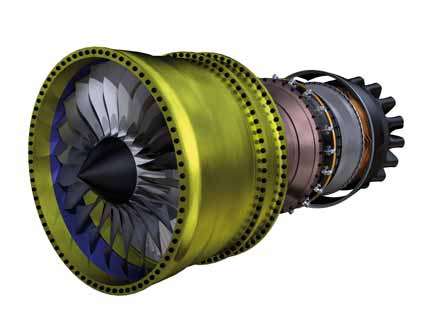Avio, Honeywell, P&WC, Rolls-Royce and Snecma look to burgeoning 10,000lb-thrust market for sales boost
Five engine manufacturers are developing powerplants in the emerging 10,000lb-thrust (44.5kN) sector to meet the demands of the super mid-size, large and long-range business jet markets.
Snecma is aiming for a mid-2008 launch of its Silvercrest new-centreline turbofan. The core engine is in manufacture, and will enter testing in the fourth quarter of 2007. The engine would be certificated by the end of 2010 at the earliest, says Jean-Pierre Conjan, executive vice-president and general manager of Snecma's commercial engine division.
|
|---|
Snecma aims to launch its Silvercrest turbofan in 2008 |
The core is sized for a 10,500lb-thrust engine, but the family is intended to cover the 8,000-11,000lb range. Advantages claimed include up to 15% lower specific fuel consumption (sfc) than current engines, at least 20% higher climb thrust, a 50% margin against CAEP 6 NOx limits and noise levels at least 25dB less than Stage 3.
The fan has 18 solid titanium wide-chord blades - "40in (1.02m) diameter fits the most advanced [aircraft] programmes", says Cojan. There is no low-pressure (LP) compressor, and the high-pressure (HP) compressor has four axial stages, all blisks, and one centrifugal stage developed with Safran sister company Turbomeca. "Centrifugal saves stages and makes sense in this size of engine," he says.
Italy's Avio is developing the low-emissions annular direct-flow combustor. The HP turbine is single-stage and the three-stage LP turbine counter-rotates to improve efficiency, providing 2% sfc benefit. Rolls-Royce, meanwhile, is hopeful of getting board approval to launch its new 10,000lb-class RB282 two-shaft all-axial engine by year-end. The company has been running several rig tests ahead of the launch, and plans to run an HP turbine rig around January 2007.
Honeywell, which displayed a mock-up of its proposed HTF10000 at NBAA, plans a technology and demonstration programme that will run up to 24 months and prepare the 10,000lb-class engine for development and certification within 36 months of a launch.
Pratt & Whitney Canada has acknowledged for the first time that it is actively in talks with airframers over a new "10K-class" engine. "We've been working the 10K thing very hard. People want the latest and greatest, but they also want it to be solid, so we're doing a lot of demonstrations to make sure we have dependable technology," says business aircraft engines vice-president Andrew Tanner.
General Electric has emerged as a surprise contender with what is believed to be a new two-shaft design that would effectively be a successor to the CF34. The first target application is believed to be Dassault's new super mid-size jet.
Source: Flight International

















